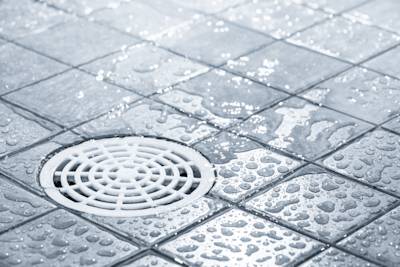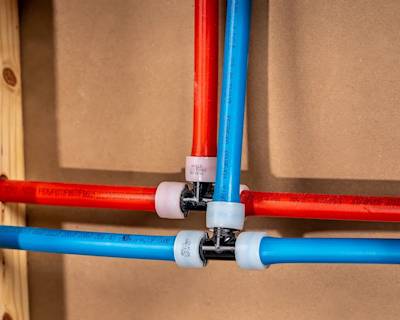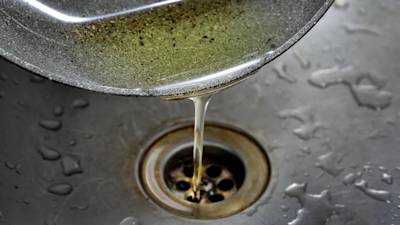Experiencing low water pressure in your house can be quite frustrating. Whether it's a tepid shower or a trickle from the faucet, low water pressure can make many day-to-day chores much more problematic. If you find yourself grappling with the question "Why is my house water pressure so low?", you've come to the right place. This detailed tutorial will provide you with practical steps to troubleshoot and fix the problem of low water pressure in your house. Get your tools ready, and let's delve into the essence of this concern!
Understanding The Causes of Low Water Pressure in House
First, to effectively address the issue of low water pressure, it's crucial to understand its common causes. From a blocked pipe, water leaks, to regulator issues; various factors can contribute to reduced water pressure. Understanding these reasons can help you spot the issue faster and adopt the right approach to solve it.
Step 1: Verify Your Water Pressure
Before you try to fix the low water pressure in your house, first make sure that the problem is indeed low water pressure. You can check your water pressure by using a pressure gauge, which can be found at local hardware stores. Attach it to an outdoor faucet and turn the water on full blast. Normal pressure will read between 30 and 80 psi. If it's below 30, you're certainly dealing with low water pressure.
Step 2: Rule Out Faucet and Showerhead Problems
If you're experiencing low water pressure in a particular bathroom or kitchen, the problem might lie within the fixtures themselves. It might be due to a blocked aerator (the screw-on tip of the tap). Remove it, clean it out, then reinstall it to see if the water pressure improves. Similarly, showerheads can also get clogged with mineral deposits, decreasing water pressure. A vinegar soak can generally do the trick here.
Step 3: Check for Leaks in Your Home
A water leak in your home can also cause low water pressure. Check for any signs of leaks such as water stains on walls or ceilings, damp spots or unusually high water bills. If a leak is spotted, it's best to immediately call in the professionals.
Step 4: Look at Your Water Pressure Regulator
If you've tried everything else but are still suffering from low water pressure in your house, it might be time to look at your pressure regulator. Not all homes have one, but if you do, it could be set too low or may have gone bad. If adjusting the pressure doesn't help, you may need to replace the regulator.
Step 5: Consult a Professional Plumber
If all else fails, don’t despair! Low water pressure that is persistent can be a sign of more complex plumbing issues that need professional attention. Enlist the aid of a certified plumber, who can provide expert analyses and solutions, ensuring restored water pressure and less water-related stress in your life.
Preventative Maintenance for Low Water Pressure in Home
Preventive measures can minimize the incidence of low water pressure. Make sure to clean your faucets and showerheads regularly to avoid clogs. Consider installing a water softener if hard water is a problem in your area, as mineral accumulation can cause low water pressure over time. Also, arrange regular inspections of your plumbing system to catch any potential issues early.
Armed with these steps, you no longer have to put up with inexplicably low water pressure in your house. Remember, the key to solving any problem is understanding it. Low water pressure can be a thing of the past—let's fix it today!
Dealing with low water pressure in your house can be frustrating, but these steps can help you troubleshoot and rectify the problem. Whether it's a simple cleaning task or a more complex check for leaks, you're now equipped with the necessary knowledge to tackle low water pressure head-on. However, water systems can be complicated, so don’t hesitate to call a professional when in doubt. Remember – perseverance is key in situations like this, and through meticulous care and attention, adequate water pressure in your house can be restored.
FAQs About Low Water Pressure in House
Given the critical role that water plays in our homes, dealing with low water pressure can be quite frustrating. To help you understand more about this pervasive problem, we have created a comprehensive FAQ that addresses the common queries linked to low water pressure in houses.
Q1: What Causes Low Water Pressure in a House?
Several factors can lead to low water pressure. These include old pipes, corrosion, clogged pipes, or even problems with the municipal water supply. Other factors might include faulty water pressure regulators, or even low pressure from the city supply.
Q2: How do I Identify the Cause of Low Water Pressure?
Identifying the cause of low water pressure in your house involves a process of elimination. Begin by determining whether the low pressure is affecting one or all areas in your home. If only one area is affected, the problem could be localized. Also, check if both cold and hot water are affected. Inconsistent pressure could indicate issues with your water heater.
Q3: How Can I Increase the Water Pressure in My House?
You can increase water pressure by first identifying and rectifying the cause. Some solutions may involve cleaning or replacing pipes, adjusting the pressure regulator, or installing a water pressure booster pump. However, severe instances might necessitate hiring a professional plumber to diagnose and fix the problem.
Q4: Are There Risks Associated with High Water Pressure?
While low water pressure is a nuisance, excessively high water pressure can also pose problems. It may lead to leakages, high utility bills, and can even cause damage to your appliances. It's important to find a balance; optimal water pressure commonly lies between 45 and 60 PSI.
Q5: What is a Water Pressure Booster, and How Does It Work?
A water pressure booster is a device that can be used to increase water pressure, especially in homes that consistently struggle with low pressure. It works by drawing in more water and pressurizing the water flow in your supply pipes.
Q6: Can Low Pressure Affect the Quality of My Water?
Interestingly, low water pressure doesn't directly correlate with poor water quality. However, if the low pressure is a symptom of corroded or damaged pipes, impurities may be introduced into the water. It's always important to investigate changes in your home's water pressure.
Q7: Can the Municipality Be Responsible for Low Water Pressure?
Yes, in some cases, the municipal water supply could be responsible for low water pressure. This could be due to supply issues, operational failures, or maintenance activities. Contact your local water department if you suspect this is the case.
Q8: Can Low Water Pressure Indicate a Plumbing Leak?
Potentially, yes. A persistent drop in water pressure that can't be explained by other factors might be indicative of a plumbing leak. Consulting a professional plumber can help identify and repair this issue.
Q9: How Often Should I Check My Home's Water Pressure?
It's good practice to check your home's water pressure about twice a year. Regular checks can help spot sudden changes that might indicate a problem needing immediate attention.
Q10: Can Installing a Water Softener Affect Water Pressure?
Generally, installing a water softener should not significantly affect your home's water pressure. However, if it's installed incorrectly or if the unit itself is faulty, it could cause a decrease in water pressure.
Addressing issues of low water pressure is vital for maintaining the functionality and comfort of your home. By understanding what might cause these problems and how to address them, you can ensure you'll always have a steady and reliable water supply.
Summary
The experience of dealing with low water pressure in a house can be quite frustrating. Besides the inconvenience it causes, low water pressure often indicates underlying issues with the plumbing system that might require urgent attention. Addressing the problem early on can save homeowners from costly repairs in the future and restore their homes to normal functionality.
There are several causes for low water pressure in a house, such as clogged pipes, faulty pressure regulators, or even issues with the local water supply. It's important to accurately diagnose the root of the problem to apply the most effective solution. If you're unsure, consider reaching out to a professional who can properly assess and rectify the issue to restore your household's water pressure.
Remember, living with low water pressure in your house is unnecessary and avoidable. There are many effective solutions available, ranging from simple fixes to more invasive plumbing work. By taking the time to understand and address the issue, you can once again enjoy the convenience and comfort of proper water pressure in your home. Don't let low water pressure disrupt your daily routines or cause unnecessary stress. Take action and get back to enjoying your daily showers or chores in a house with proper water pressure.
About KYPD Plumbing
Welcome to KYPD Plumbing! Located in the beautiful heart of Nicholasville, KY, we are a family-owned and operated company dedicated to providing top-notch plumbing services. We have spent years building our reputation as trustworthy, reliable and professional. Our team is composed of highly trained, experienced, and passionate individuals who're ready to tackle any plumbing issues you may have, no matter how big or small. At KYPD Plumbing, customer satisfaction is our top priority. We aim to ensure that our community members live comfortably knowing that their plumbing systems are in good hands. We look forward to serving you!
Tags: Plumbing Tips, Water Pressure, DIY Fixes,



































